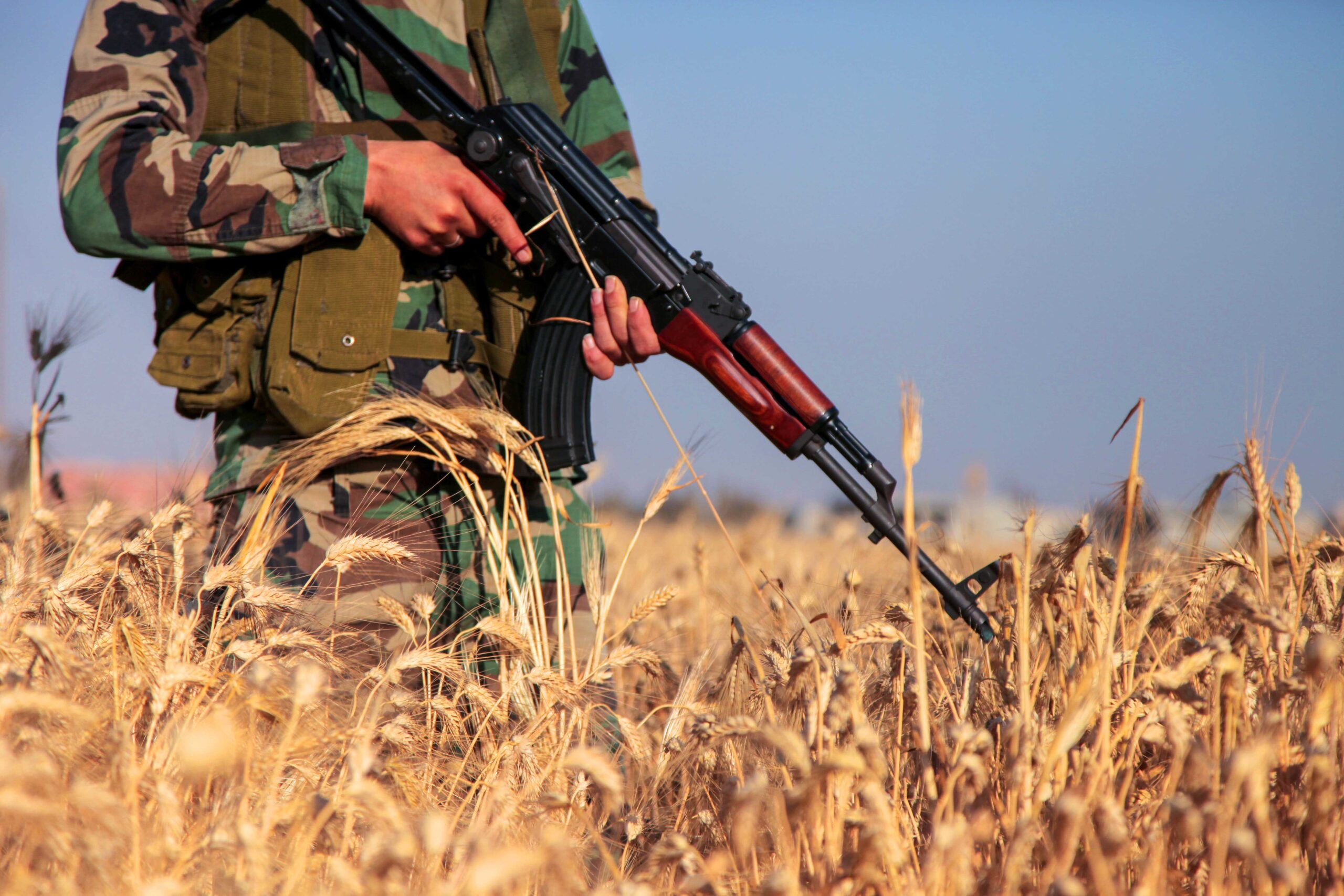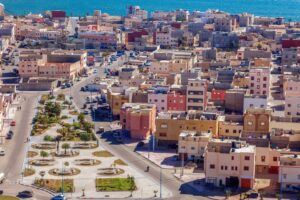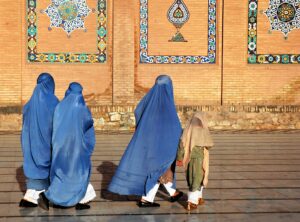Iran’s policies related to its militias in the Middle East are increasingly becoming a mirror-picture of its relationship with Hezbollah of Lebanon. Iran’s list of proxy partners in the region and beyond is immense, but only a few of these organizations have demonstrated the intent and capability to be treated as a legitimate extension of Iran’s military, both in terms of their objectives and ideology. Therefore, in elevating any group and granting it a special status, Iran has transformed the nomenclature of its proxy partners. The most notable example is Harakat Hezbollah Al-Najuba.
Hezbollah’s loyalty to Iran’s supreme leader and ideology is unwavering.
Iran’s relationship with Hezbollah is notably different from those with Hamas in the Gaza Strip or the Houthis in Yemen. There have been important differences of opinion between the Iranian regime and these groups over the years. For example, Hamas had opposed supporting the Assad regime in Syria that has led to the straining of its ties with Iran to a certain extent.[i] Similarly, despite having relied on Iran, the Houthis do not subscribe to the ideology of Vilayat-e Faqih and do not consider Iran’s Supreme Leader, Ayatollah Ali Khamenei, as a spiritual or religious guide. On the other hand, Hezbollah’s loyalty to Iran’s supreme leader and ideology is unwavering to the extent that its decision to potentially go to war is conditioned upon the guidance of Iran’s Supreme Leader, although it retains a certain degree of autonomy.[ii] The Iran-Hezbollah relationship has served as a model for Iran in cultivating similar levels of policy convergence with other proxy partners, in a way establishing franchises of Hezbollah elsewhere as well.
Harakat Hezbollah Al-Najuba (HHN) was established in 2013 in the wake of the Syrian civil war and has been headed by Akram Al-Kaabi since. Currently, it has three brigades: Liwa Ammar Ibne Yasir, Liwa Al-Hasan Al-Mujtaba and Liwa Al-Hamd. Al-Kaabi was the member of the Mehdi Army of Muqtada Sadr that fought against the US forces in Iraq between 2003 and 2008. However, as the ceasefire between the Mehdi Army and US forces was unrolled, many of its top leaders deserted the ranks. Al-Kaabi was one of such prominent figures, who broke with Sadr and joined Qais Al-Khazali’s Asaib Ahl Al-Haq (AAH).[iii] In AAH, Al-Kaabi was tasked with launching the organization’s franchise in Syria alongside other Iranian-backed militias. Nonetheless, the internal struggle over the leadership within those militias in Syria combined with the dire situation of governmental collapse in Iraq compelled AAH to focus on the security of Iraq under the banner of the Popular Mobilization Forces (PMF). This led to the departure of Al-Kaabi from the AAH, eventually resulting in the formation of the HHN.[iv]
In Syria, Harakat Hezbollah Al-Najuba (HHN) has become the oldest and one of the chief proxy militias of Iran, operating around Damascus, Deir ez-Zor, Aleppo and Hama.
The division between AAH and HHN gave Iran a strategic opportunity. While AAH has a political wing as well that actively partakes in the electoral process, HHN is purely militaristic in nature. Similarly, AAH has blended its ideology with an Iraqi fervor. On the other hand, HHN operates in a trans-state mechanism, i.e. both in Iraq and Syria, and their mutual border regions. This modus operandi brings it closer to Hezbollah in Lebanon, which also functions in different regions. On the other hand, Hezbollah’s close involvement in national politics is not something that HHN shares. In Syria, HHN has become the oldest and one of the chief proxy militias of Iran, operating around Damascus, Deir ez-Zor, Aleppo and Hama.[v] Additionally, HHN is also part of the PMF in Iraq as its 12th Brigade. The provinces of Anbar, Nineveh and Saladin have come under its areas of control, crucial as they lie along the Syria-Iraq border. Moreover, they are also Sunni-dominated areas. These two aspects provide HHN with a sensitive and significant role in the overall calculus of Iran’s proxy strategy.
First, HHN operations in the border provinces of Iraq give it the logistical advantage to conduct cross-border activities. This could lead to its unchallenged supremacy over the bordering regions of Iraq and Syria in time. Second, its presence in Sunni-dominated areas of Iraq and erstwhile ISIS-dominated regions of Syria, transformed it into a battle-hardened and experienced militia. Because of its experience on the battlefield, it is being utilized as a tool of deterrence in Iraq. For example, since the beginning of the Gaza War on 7 October 2023, the strikes conducted by Iran-backed militias in Iraq and Syria have been mostly dominated by HHN, accounting for nearly 69 percent of total strikes.[vi] Such tactics employed by HHN resulted in not only its consolidation within Iran’s ‘Axis of Resistance’ but also the emergence of the group as an extension of Iran’s defense strategy in Syria. This is also evident from the frequent meetings of Al-Kaabi with Russian officials, Syrian officials as well as Hezbollah’s top leadership.
Regionally, Al-Kaabi has been in the midst of developing a new brigade of HHN, the Golan Liberation Brigade, to work alongside Hezbollah in combating Israel. Furthermore, he has openly admitted that Hezbollah and HHN are two main pillars of the resistance, hence, solidifying HHN’s position alongside Hezbollah.[vii]
Ideologically, what makes HHN stand out among other Iran-backed militias in Iraq is the loyalty of its top leadership to Iran’s supreme leader, Ayatollah Khamenei. While other Iran-backed militias share similar sentiments, the case of HHN is unique to the extent that they defy the concept of state. This is evident from Al-Kaabi’s statements, in which he admitted that if Khamenei commanded it, the HHN would take down the government in Baghdad.[viii] This sense of ideological adherence follows the same path of Hassan Nasrallah and Hezbollah. Hezbollah considers Khamenei their authority in reference to their religious following. HHN’s defiance of Iraqi statehood in favor of Khamenei is also one of the reasons why it is not active politically inside Iraq and only operates its military wing in the country.
Hezbollah and the HHN are actual extensions of Iran’s military muscle.
HHN provides insight into Iran’s evolving policies towards its proxy partners. While some militias provide Iran the deterrence capability against its adversaries it seeks, others like Hezbollah and the HHN are actual extensions of Iran’s military muscle, rendering any action by these entities a de-facto Iranian act. Iran is making an active effort of introducing the ‘hezbollahization’ of its proxy policy, which would allow it to expand with even greater ease in the region. This replication of Hezbollah in Iraq would also be helpful for Iran to assert its policy inside Syria. If the HHN continues to be of optimal use to Iran, Tehran might consider developing similarly eager militias in other states, potentially in Yemen.
[i] Abu Amer, A. (2018). “What is behind the Hamas-Iran rapprochement?”, Al Jazeera, 26 June 2018, retrieved from: https://www.aljazeera.com/opinions/2018/7/26/what-is-behind-the-hamas-iran-rapprochement.
[ii] Asharq Al-Awsat (2019). “Nasrallah: Khamenei Is Our Imam, Our Leader… No Place For Neutrality in Any War Against Iran”, 11 September 2019, retrieved from: https://english.aawsat.com/home/article/1897526/nasrallah-khamenei-our-imam-our-leader%E2%80%A6-no-place-neutrality-any-war-against.
[iii] Knights, M. (2024). “Profile: Harakat Hezbollah al-Nujaba”, The Washington Institute for Near East Policy, 4 January 2024, retrieved from: https://www.washingtoninstitute.org/policy-analysis/profile-harakat-hezbollah-al-nujaba.
[iv] Knights, M., Malik, H. and Smith, C. (2023). “How Tehran-Backed Terrorist Organizations and Militias Captured the Iraqi State”, CTCSENTINEL, 16(11): 1-24, December 2023.
[v] Houshmand, M. (2018). “Iran’s Multi-Purpose Proxy in Iraq and Syria”, Iran Wire, 31 March 2018, retrieved from: https://iranwire.com/en/features/65248/.
[vi] Knights, M. (2024). “Who are Nujaba and Why Did the US Just Strike Them?”, The Washington Institute for Near East Policy, 4 January 2024, retrieved from: https://www.washingtoninstitute.org/policy-analysis/who-are-nujaba-and-why-did-us-just-strike-them.
[vii] Roggio, B. and Daoud, D., “‘Hezbollah and Harakat al Nujaba are the twins of resistance, Iraqi militia spokesman says”, Long War Journal, 18 March 2016, retrieved from: https://www.longwarjournal.org/archives/2016/03/hezbollah-and-harakat-al-nujaba-are-the-twins-of-resistance-iraqi-militia-spokesman-says.php.
[viii] Roggio, B. and Weiss, C. (2015). “Iraqi Shiite militia leader says he would overthrow government if ordered by Iran’s supreme leader”, Long War Journal, 12 November 2015, retrieved from: https://www.longwarjournal.org/archives/2015/11/us-designated-terrorist-of-iraqi-militia-reportedly-in-aleppo.php.

















